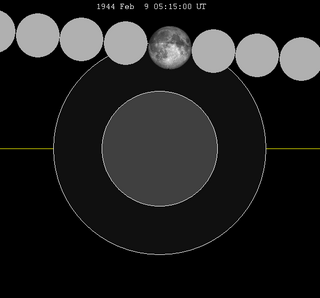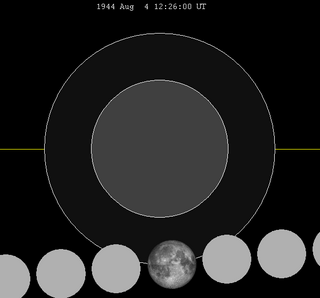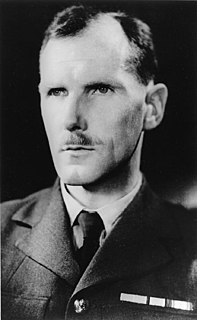 W
WA penumbral lunar eclipse took place on February 9, 1944.
 W
WA penumbral lunar eclipse took place on July 6, 1944.
 W
WA penumbral lunar eclipse took place on August 4, 1944.
 W
WA penumbral lunar eclipse took place on December 29, 1944. In a rare total penumbral eclipse, the entire Moon was partially shaded by the Earth, and the shading across the Moon should have been quite visible at maximum eclipse. The penumbral phase lasted for 4 hours and 27 minutes in all, though for most of it, the eclipse was extremely difficult or impossible to see.
 W
WA total solar eclipse occurred on January 25, 1944. A solar eclipse occurs when the Moon passes between Earth and the Sun, thereby totally or partly obscuring the image of the Sun for a viewer on Earth. A total solar eclipse occurs when the Moon's apparent diameter is larger than the Sun's, blocking all direct sunlight, turning day into darkness. Totality occurs in a narrow path across Earth's surface, with the partial solar eclipse visible over a surrounding region thousands of kilometres wide. Totality was visible from Peru, Brazil, British Sierra Leone, and French West Africa. At greatest eclipse, the Sun was 78 degrees above horizon.
 W
WAn annular solar eclipse occurred on July 20, 1944. A solar eclipse occurs when the Moon passes between Earth and the Sun, thereby totally or partly obscuring the image of the Sun for a viewer on Earth. An annular solar eclipse occurs when the Moon's apparent diameter is smaller than the Sun's, blocking most of the Sun's light and causing the Sun to look like an annulus (ring). An annular eclipse appears as a partial eclipse over a region of the Earth thousands of kilometres wide. Annularity was visible from British Uganda, Anglo-Egyptian Sudan, British Kenya, Ethiopia, British Somaliland, British Raj, Burma, Thailand, French Indochina, Philippines, South Pacific Mandate in Japan the Territory of New Guinea.
 W
WSpaceflight as a practical endeavor began during World War II with the development of operational liquid-fueled rockets. Beginning life as a weapon, the V-2 was pressed into peaceful service after the war at the United States' White Sands Missile Range as well as the Soviet Union's Kapustin Yar. This led to a flourishing of missile designs setting the stage for the exploration of space. The small American WAC Corporal rocket was evolved into the Aerobee, a much more powerful sounding rocket. Exploration of space began in earnest in 1947 with the flight of the first Aerobee, 46 of which had flown by the end of 1950. These and other rockets, both Soviet and American, returned the first direct data on air density, temperature, charged particles and magnetic fields in the Earth's upper atmosphere.
 W
WThe V-2, with the technical name Aggregat 4 (A4), was the world's first long-range guided ballistic missile. The missile, powered by a liquid-propellant rocket engine, was developed during the Second World War in Germany as a "vengeance weapon" and assigned to attack Allied cities as retaliation for the Allied bombings against German cities. The V-2 rocket also became the first artificial object to travel into space by crossing the Kármán line with the vertical launch of MW 18014 on 20 June 1944.
 W
WThe Overlord planners for the invasion of Europe in 1944 specified suitable weather for the assault landing; with only a few days in each month suitable. In May and June 1944 frequent pre-assault meetings were held at Southwick House in Hampshire near Portsmouth by Eisenhower with Group Captain James Stagg of the RAF, the Chief Meteorological Officer, SHAEF, his deputy Colonel Donald Yates of the USAAF, and his three two-man teams of meteorologists. Stagg was a "dour but canny Scot.. " He had been given the rank of group captain in the RAF "to lend him the necessary authority in a military milieu unused to outsiders". The senior commanders were General Bernard Montgomery, Admiral Sir Bertram Ramsay and Air Marshal Sir Trafford Leigh-Mallory, plus Eisenhower's deputy, Air Marshall Arthur Tedder, his chief of staff Walter Bedell Smith and his deputy chief of Staff Major General Harold R. Bull.